Keyboards: separate, with even columns and half reversal
In this article I will talk about keyboards of general use, but with an unconventional physical layout, namely, fully or partially divided into halves, and with vertical columns.
If you are interested in keyboards, and do not miss articles about them here, then you already know how straight vertical columns are better shifted, and how half-split the keyboard is better than combined ones. If not - at the end of the article I will provide links.
No, there will not be anything about extravagant chord keyboards, or built for printing by shorthand.
Only that which suits the Kajom of us, those who print a lot, whether he is a programmer or just loves chatik and forums.
Anyway, any of us learns the method of blind ten-finger printing, and the sooner this happens, the better.
For priming KDPV.
')
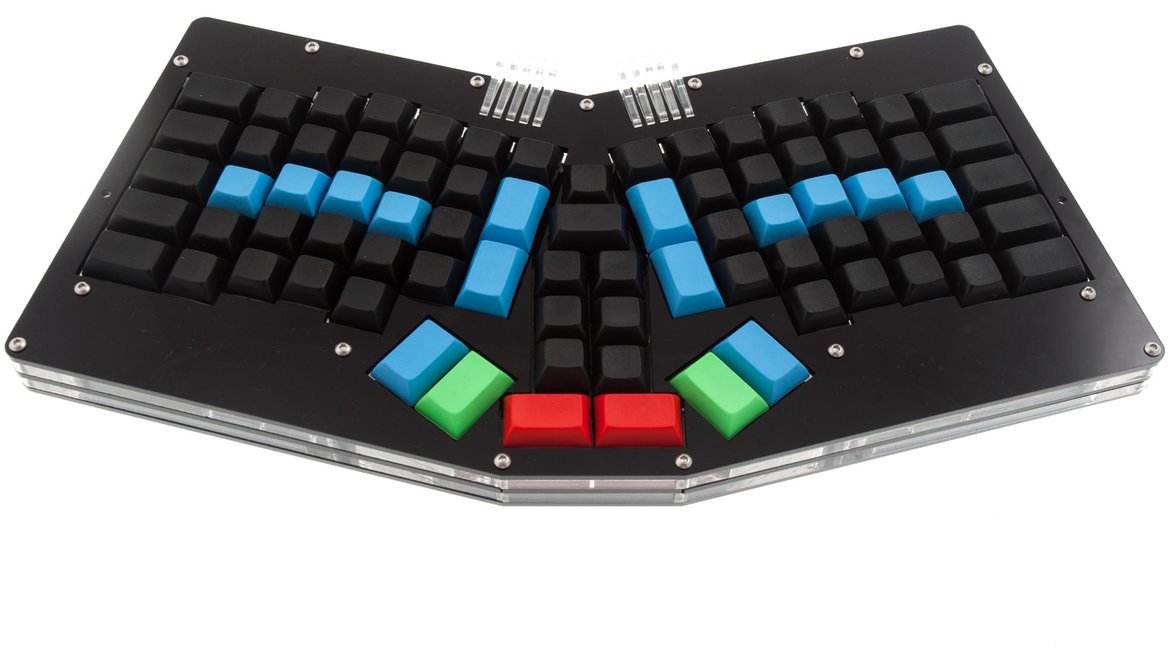
First, I will talk about old keyboards of this type, including Apple, IBM and NEC, which did not live up to our time, then more or less modern ones, and then about a new wave, including the domestic movement.
There are so many keyboards that it’s pretty hard to classify them. Let's leave this work to professional taxonomists.
It is hard to say who was a pioneer in this area, but I have a vague suspicion that the Japanese in the framework of the Tron project, which was to become a personal computer platform in the mid-80s, but there is an opinion that it did not because of the pressure of the US government on Japan, Microsoft lobbied. A multi-page report on a study conducted on a random sample of several hundred Japanese people was left to us from the project in order to make the keyboard ideally suited to most users. And well, they turned out quite interesting:

You can see a lot of interesting things right away:
- The columns are straight and go like a fan. Relax your fingers, punch and squeeze your palm and realize that it is very natural, when the fingertips are closer to the hand, they are closer to each other;
- a few buttons under the thumbs. On conventional keyboards, even the space is a bit tall so that the thumbs on it lie in a relaxed position, what can we say about the modifiers, to which the thumbs come to bend in an unnatural way;
- Spacebar, Shift, Backspace keys on the thumbs;
- keys O and X (presumably - Enter and Escape) under the index, and not under the weak little fingers;
- The block under the little fingers is shifted below. No wonder, because the little finger is shorter than the rest of the fingers in most people.
In the footsteps of Tron, NEC went with its PC-880I-KI, released in the 83rd year:

There were modifications, shortened the keys from the middle block:
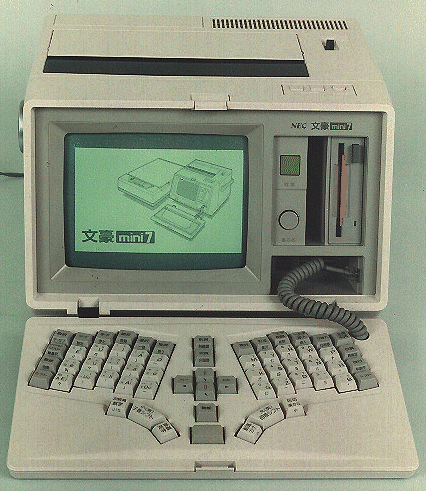
And then completely removed, at the same time adding another button under the thumb:
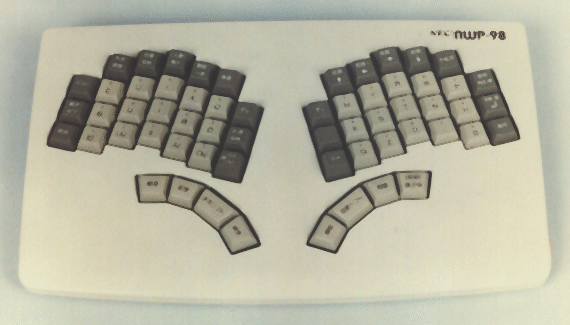
And then they almost completely removed the second column under the little fingers, and half spread them apart.
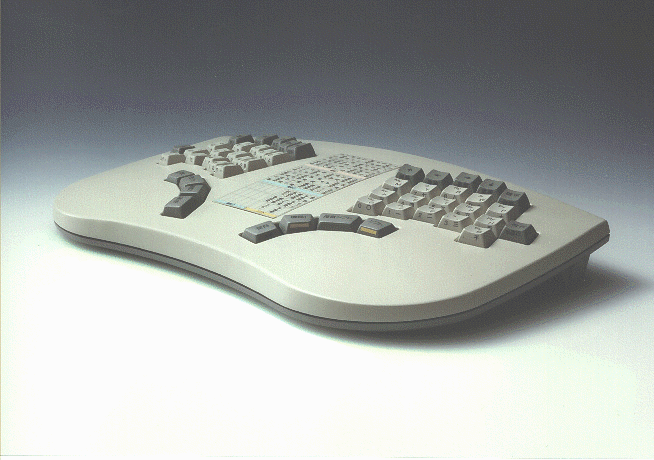
Alas, Apple either did not fully understand the idea of the Japanese, or were afraid to do something revolutionary (and these were just the years of the company's stagnation), or tried to make the product cheaper. It is possible that American law regulated the keyboard, and it was impossible to do something more or less deviating from the standard.
It turned out this, called Apple Adjustable Keyboard:
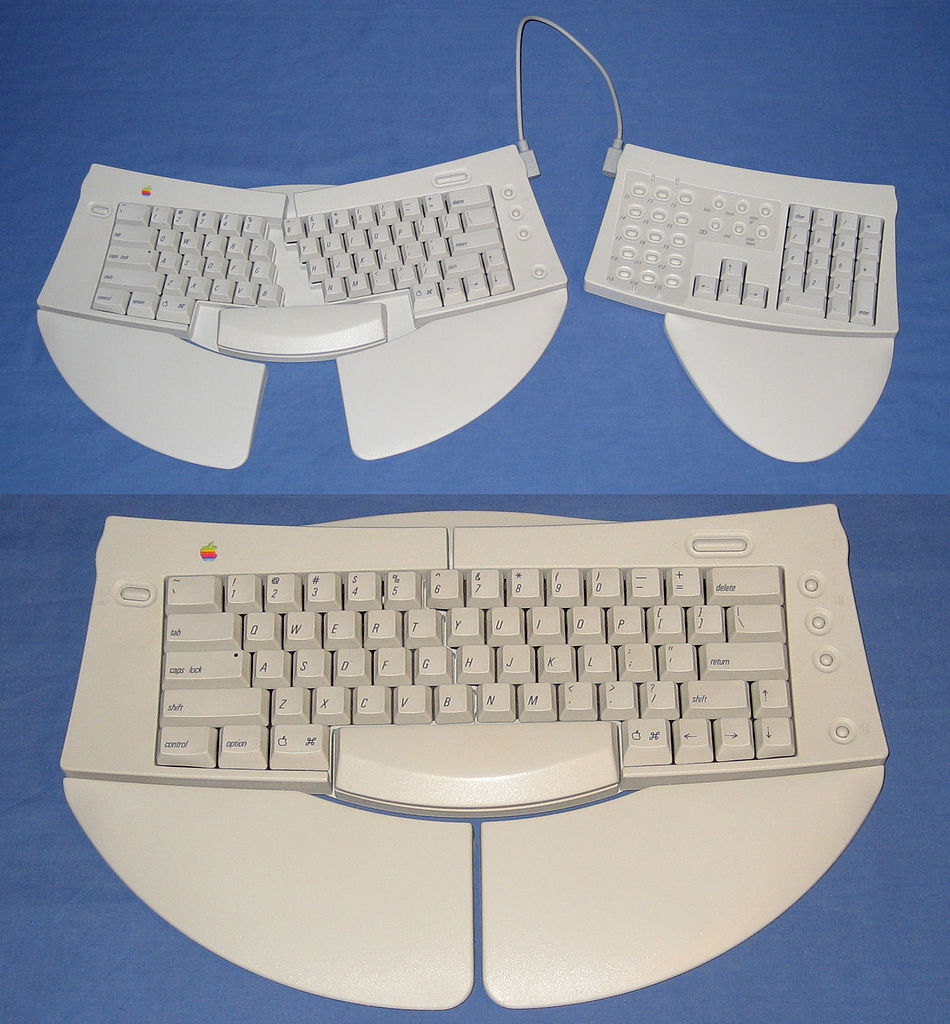
All the wonderful ideas from Tron were thrown out, only a half reversal remained, but it was regulated.
It is interesting to note that the keyboard was released to protect the company from lawsuits that were popular at the time against people who received RSI when typing on regular keyboards.
Keys - low profile.
IBM in the same 93m year released a keyboard with the same name as the Apple Adjustable Keyboard, but more flexibly adjustable:

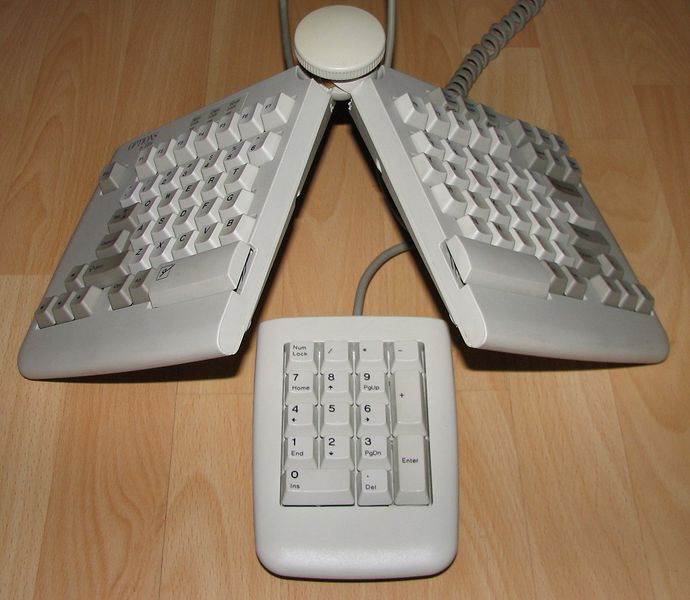
In addition, it differed traditional for IBM those times mechanical switches with a snapping spring.
It sold a little more than 1000 pieces of such keyboards.
A year later, Cherry released the G80-5000 (before this was the prototype of the V80-5000, but the year of its release is unknown):
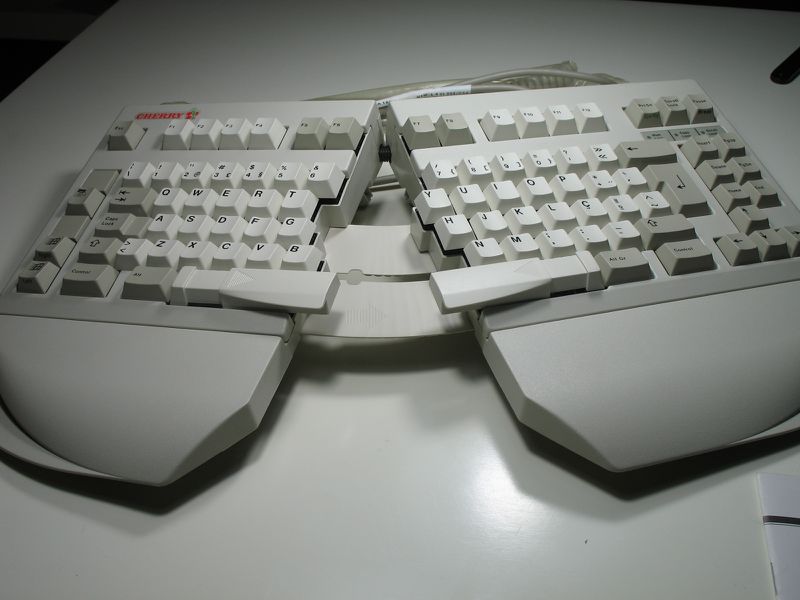
The same sandals, and even with shoals - Enter Backspace further than usual.
These people are known for thinking about their users more than other manufacturers.
In the 96th year, whether an employee of the company as part of the prototype, or a hobbyist, assembled a laptop from SGI O2 parts.

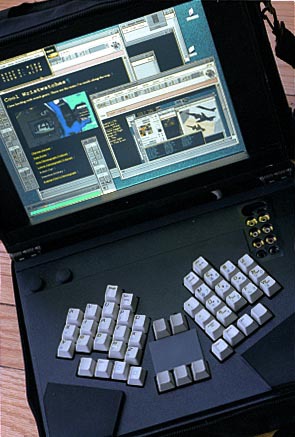
I contacted the author, he still ardently refers to keyboards, but now I’m very busy.
At the very end of the section, because released a decade later.
The models are nonetheless interesting. The first, Effortlessly keyboard, with symmetric shift of rows. 95th year:
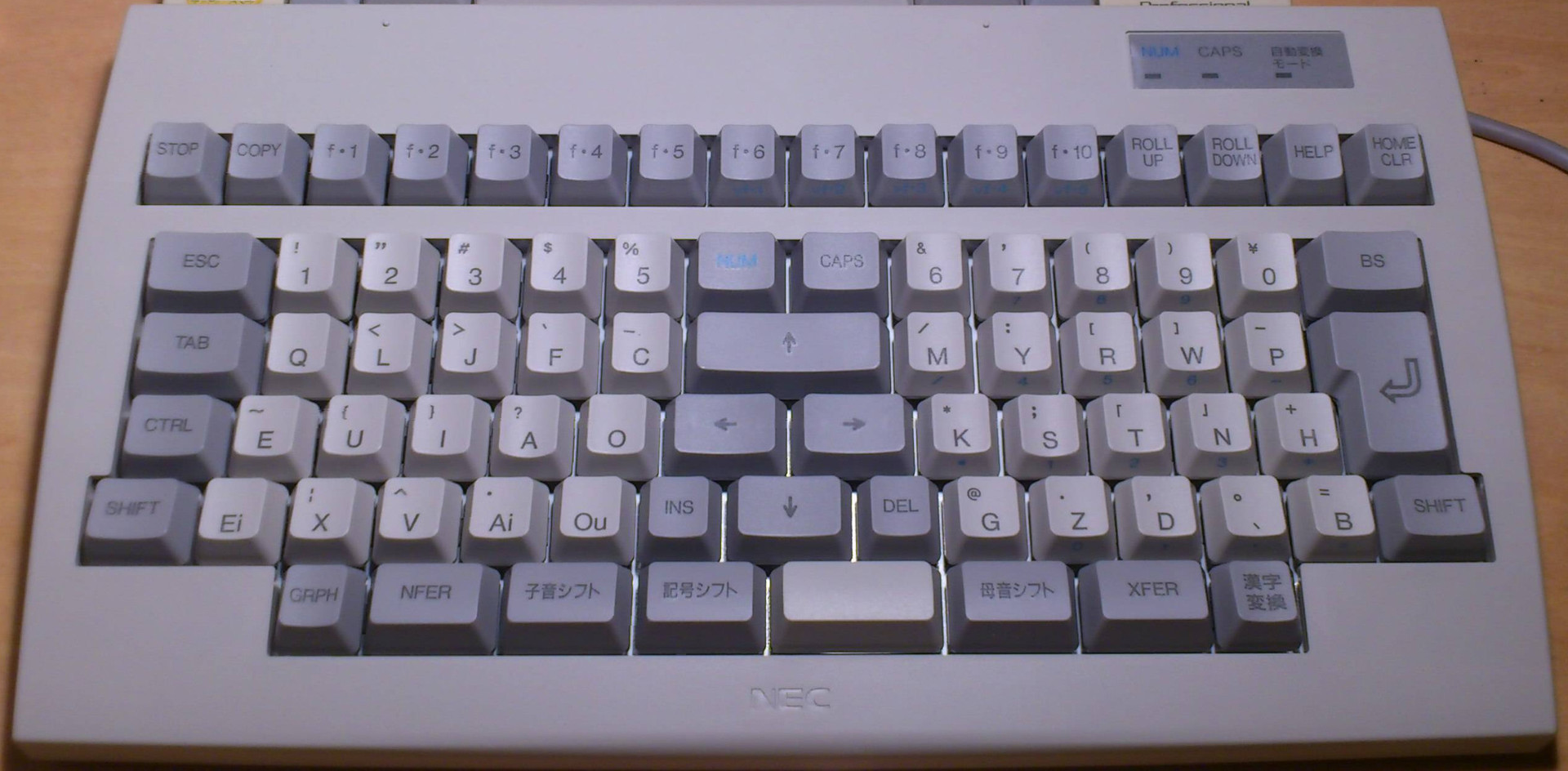
The second, Ergo Fit keyboard, with straight columns and half reversal. 98th year:
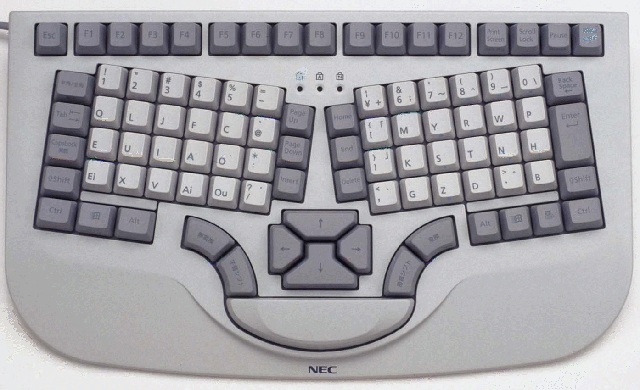
Unknown year prefix KOBO:

Currently selling quite a lot. There are Kinesis, Maltron, and many others, about which I made a great overview topic .
Since then, the new Matias Ergo Pro has just appeared:
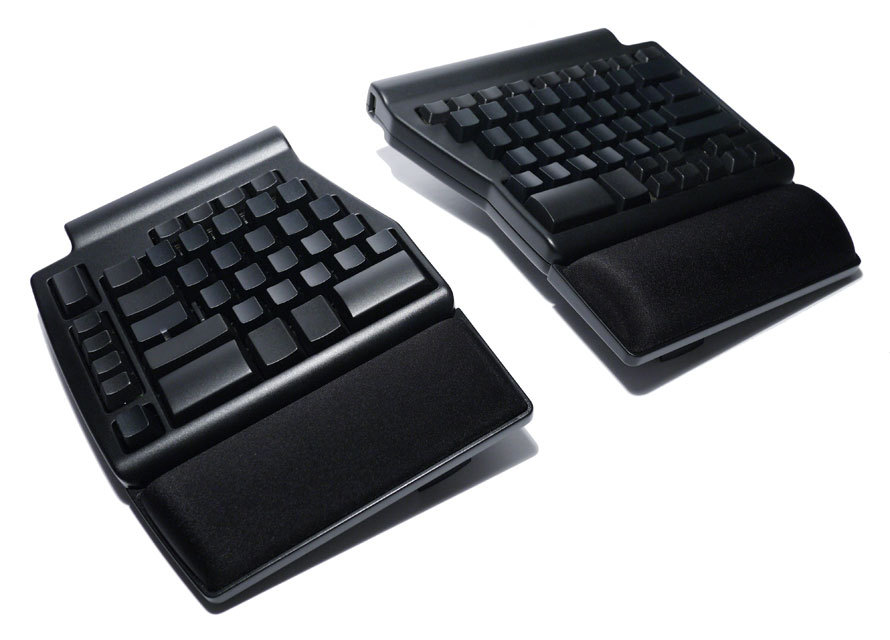
Yes, the mysterious Esrille NISSE, which seems to be possible to buy, but the price bites very strongly, and whether delivery exists outside of Japan is unknown:
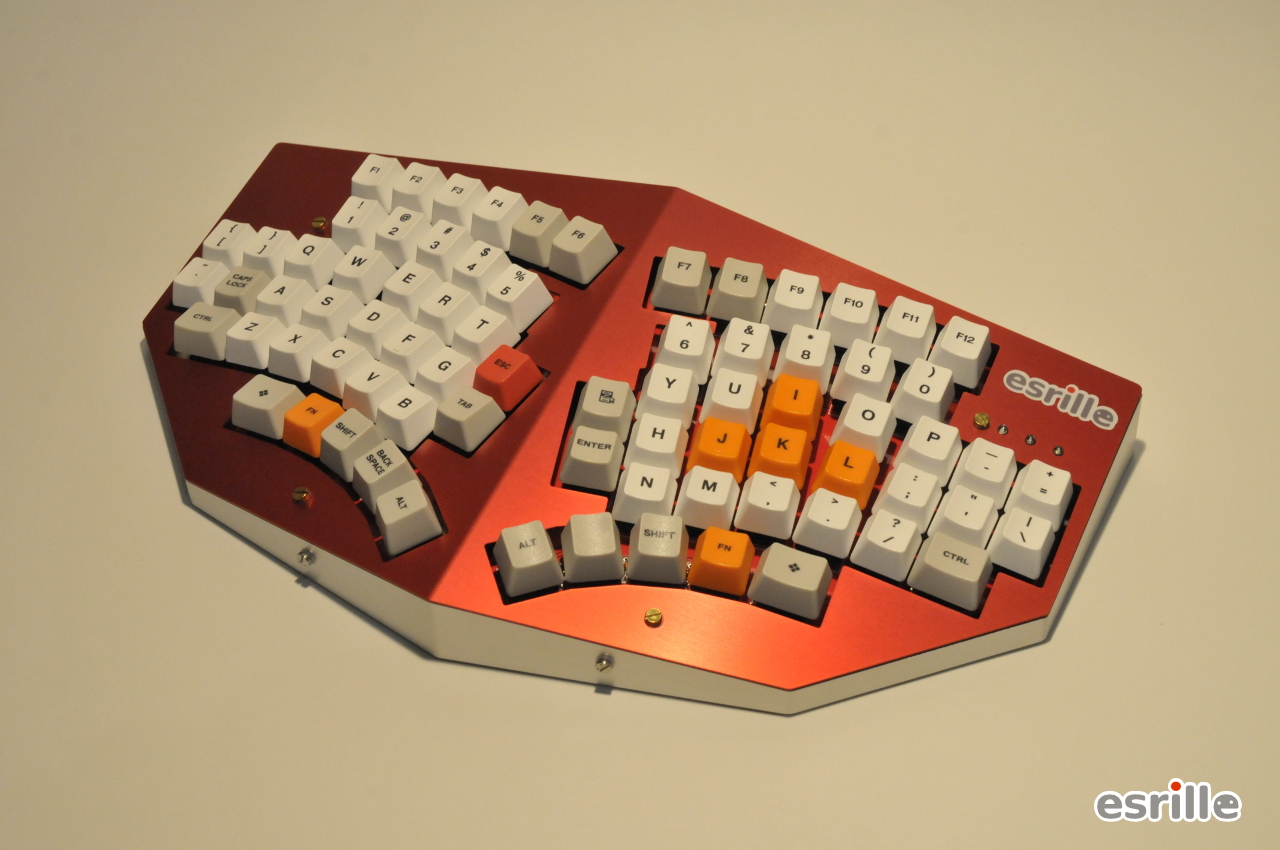
UPD:
Veyboard Velotype was also found, but it seems to be a chord one:
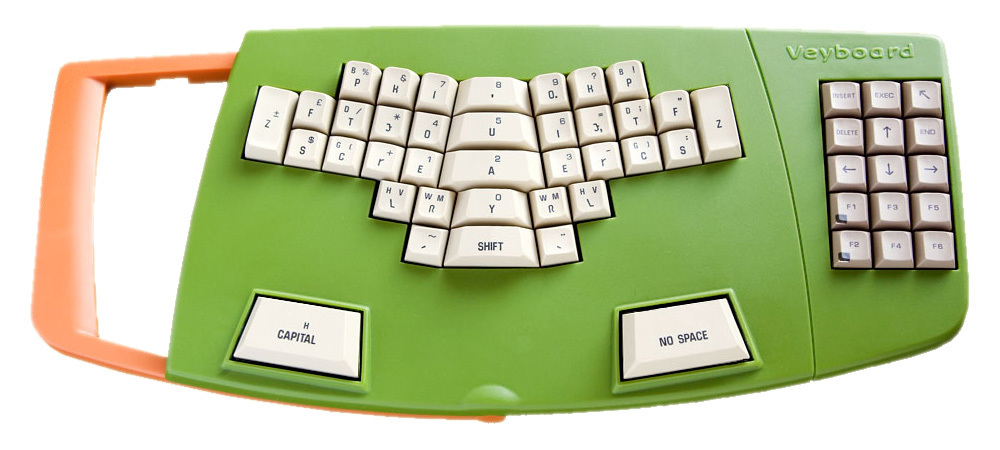
All of these keyboards are good, but bad.
No wonder so many enthusiasts continue to invent new and new keyboards.
So, about enthusiasts.
Immediately shocking photos. All keyboards are assembled at home by self-made craftsmen. For collective or individual projects.
The kit periodically can be bought on the Internet when a critical mass of people willing to purchase accumulates.
The original Ergodox (kit for self-assembly) in different variations:
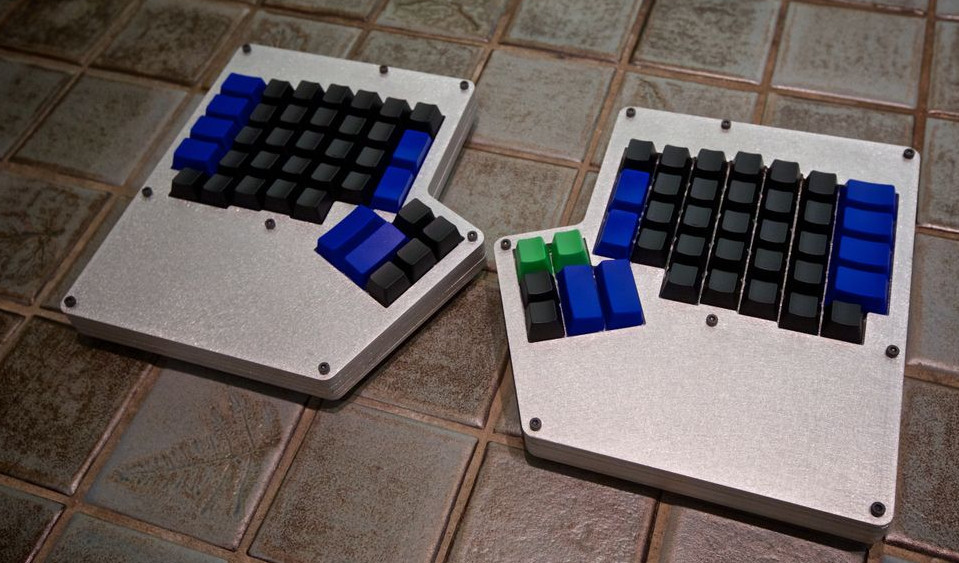
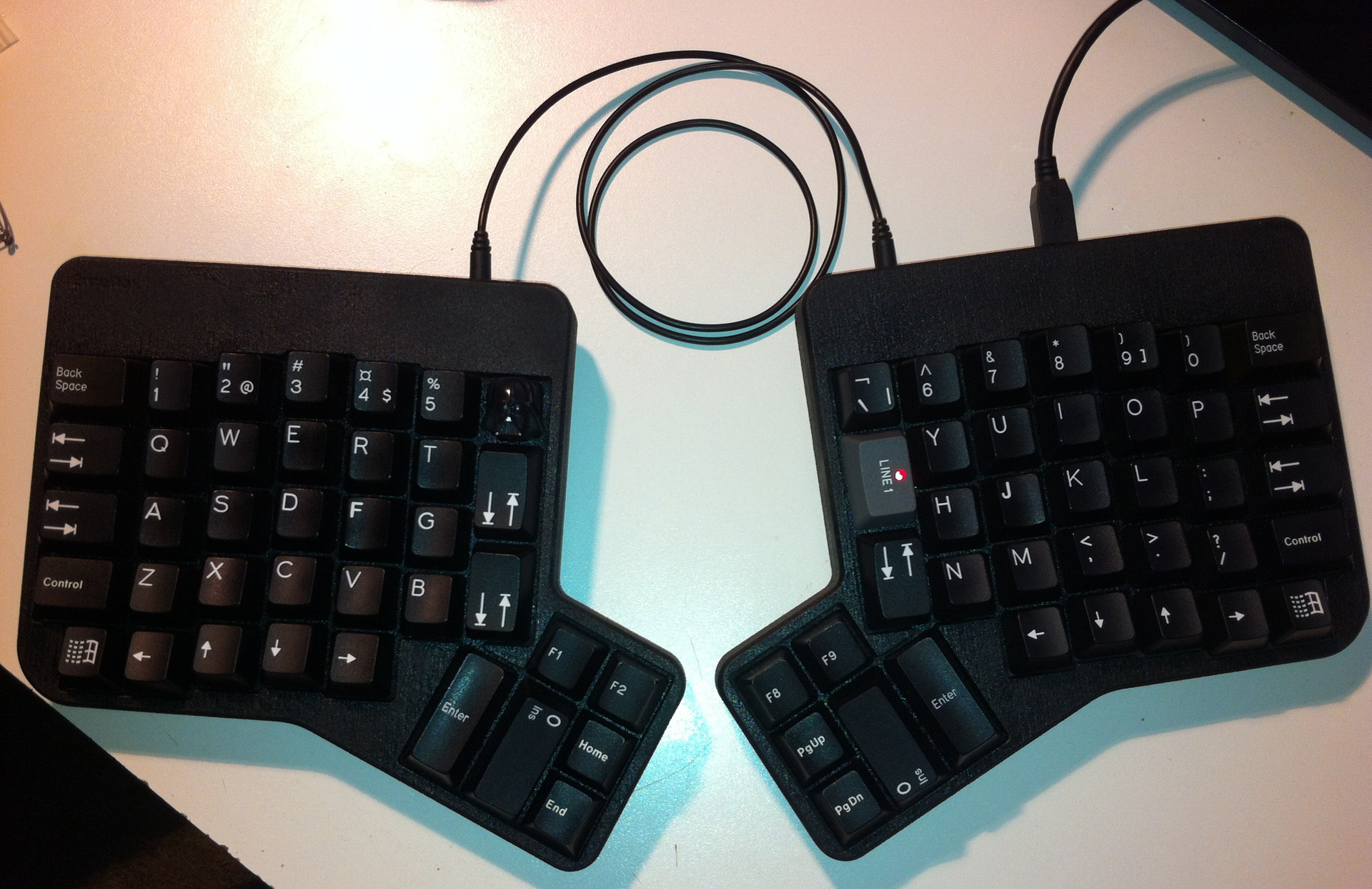
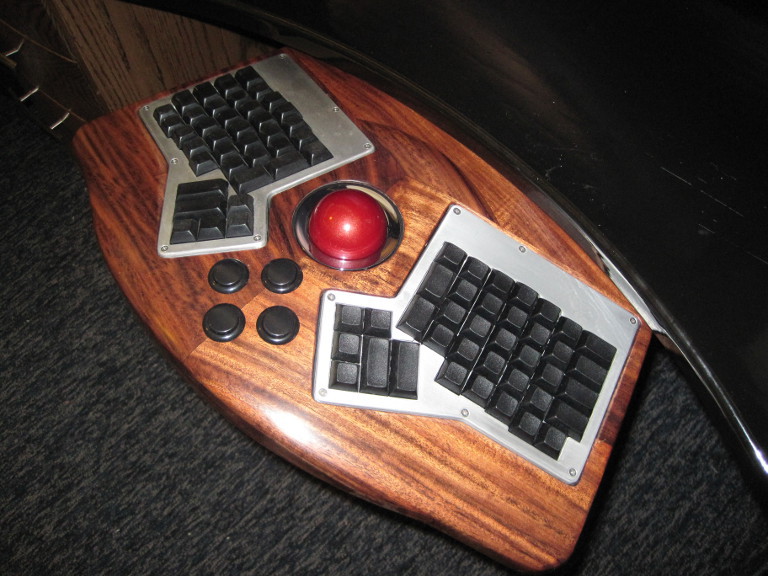

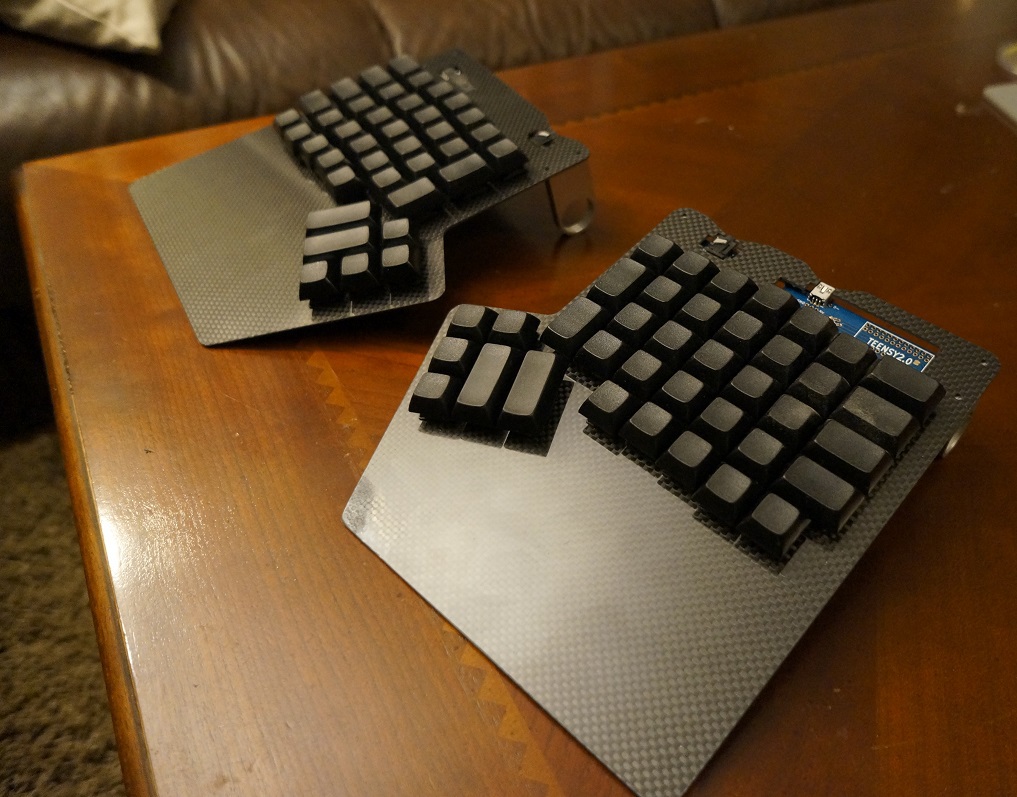
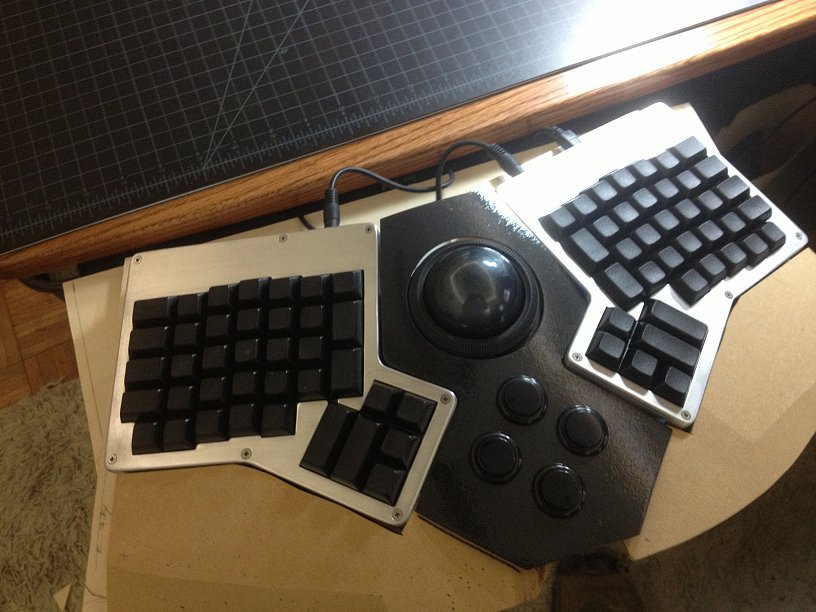
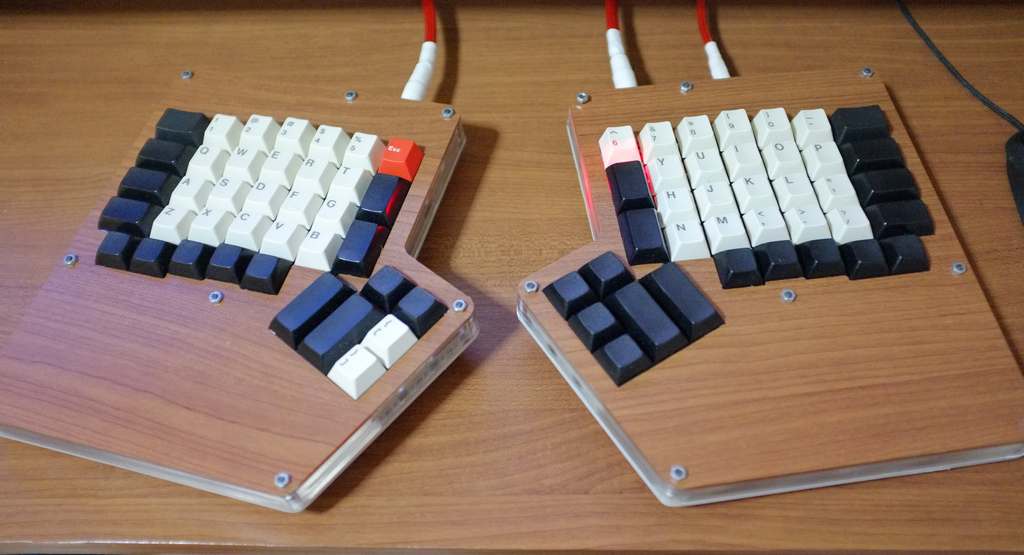
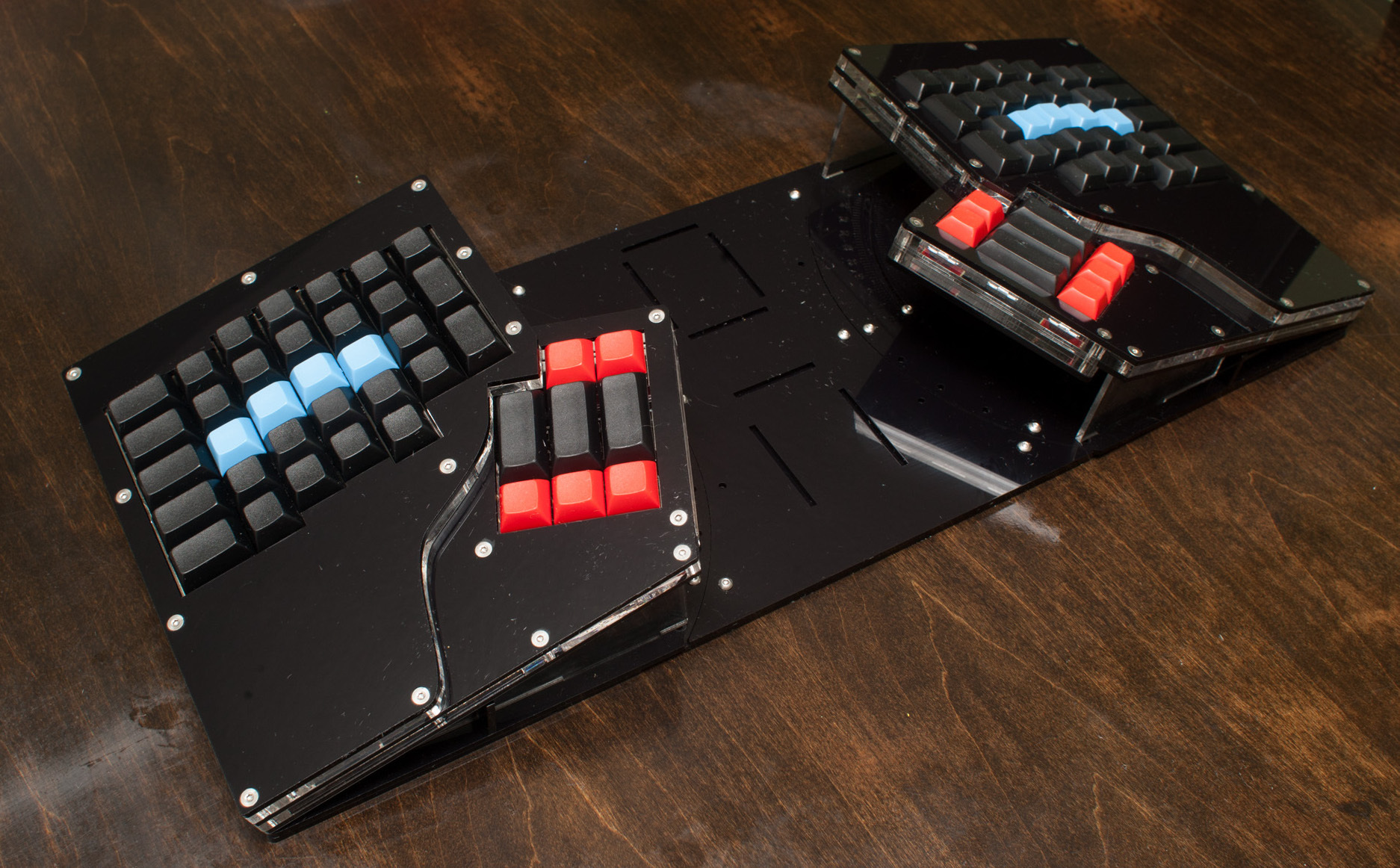
From the latter, the project was born Axios, as Ergodox with open source. Buy it is impossible. One of the prototypes was KPDV for this post:

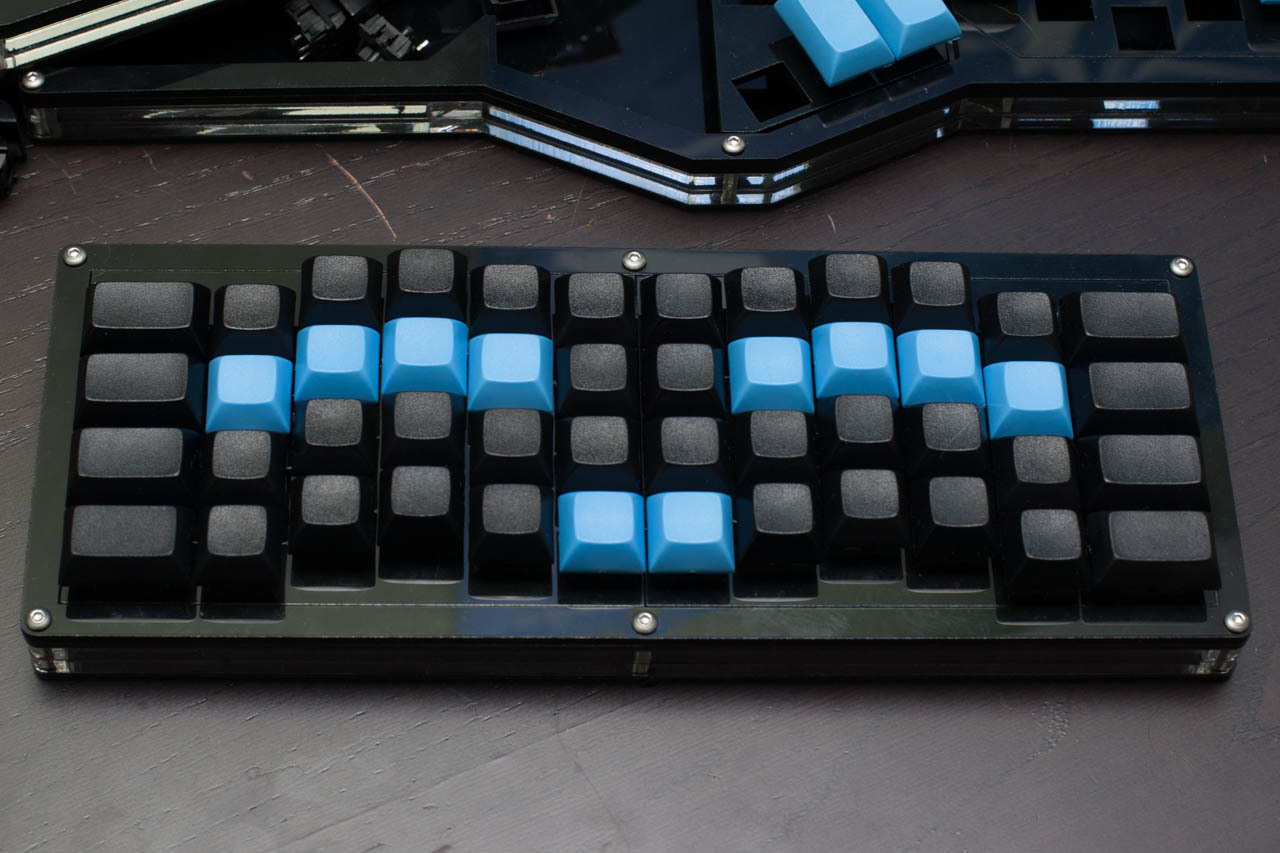



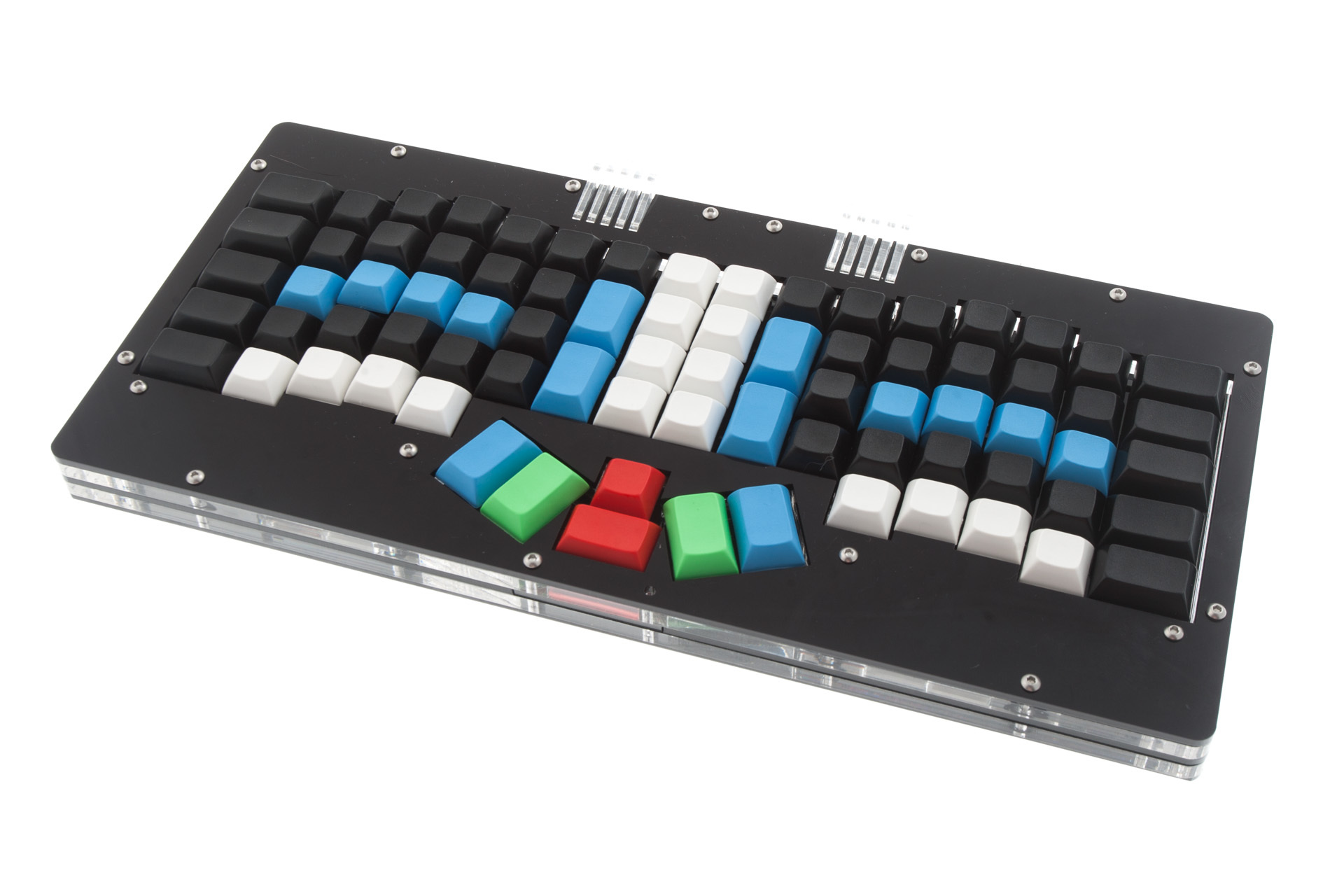
Inspirer of the project Ergodox, Key64:
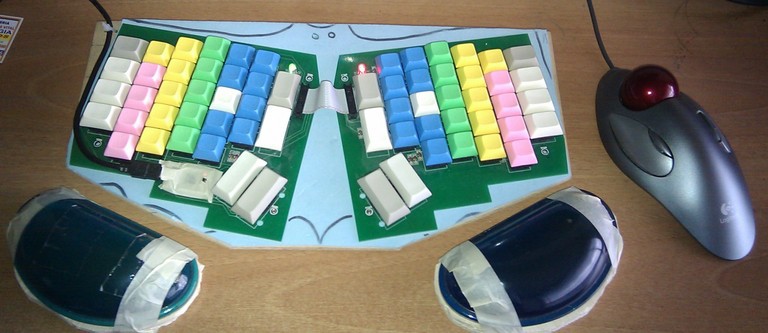
A series of keyboards from Jesse Vincent, which organized the company and now continues to search for the perfect keyboard that will stir up the public:

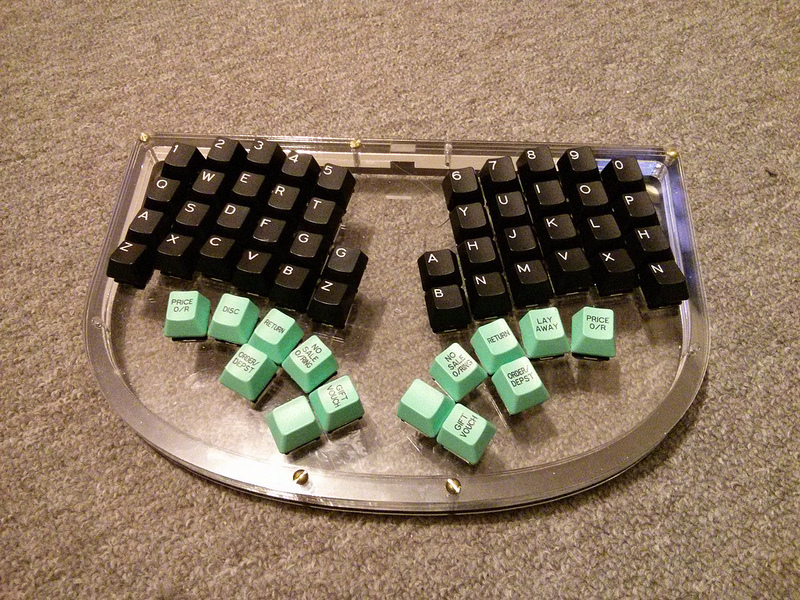

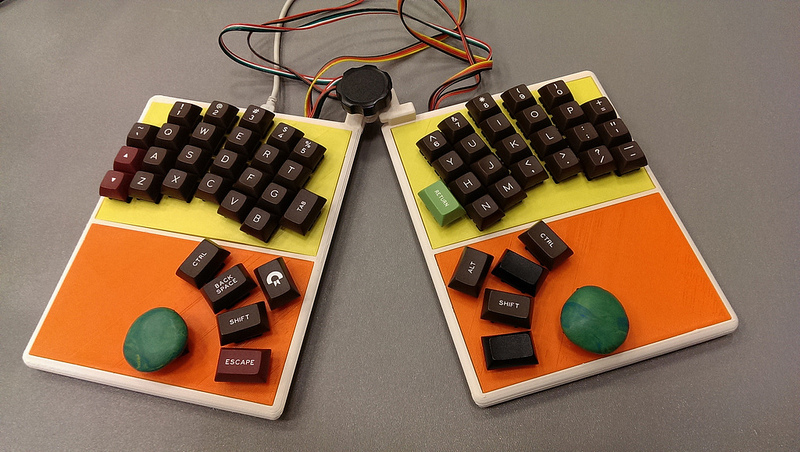
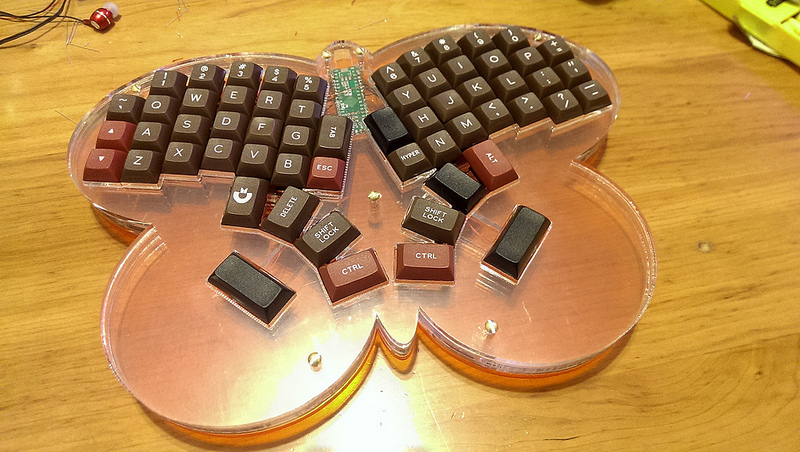
Atreus:

Two-handed OneHand:
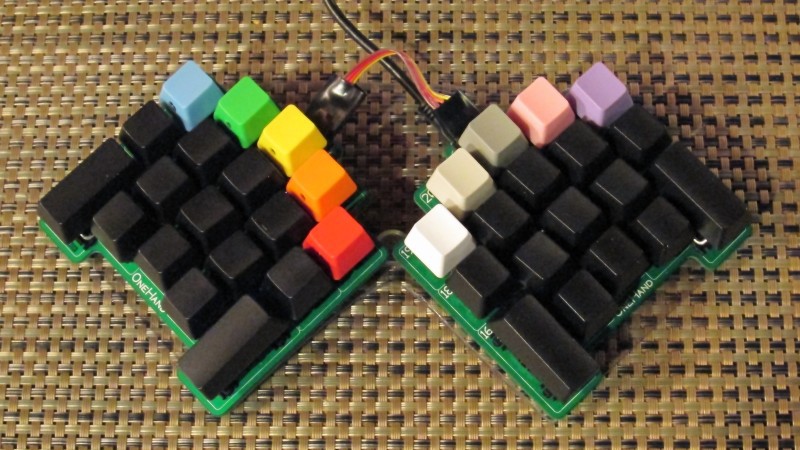
Here is such an interesting concept, which recently raised a lot of money on kickstarter:
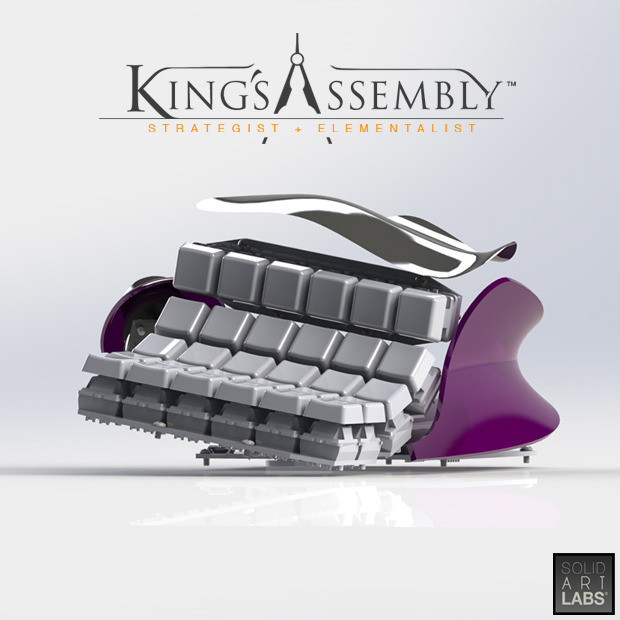
Serial keypad wizard with a capacious nickname suka managed to insert trackpoint from old laptops into their keyboards:


Here is such a nondescript option:
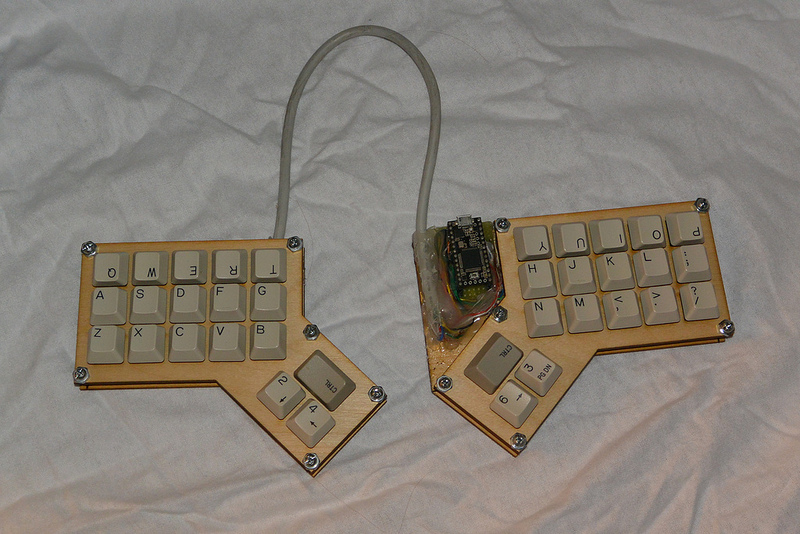
Here is such a noodle:
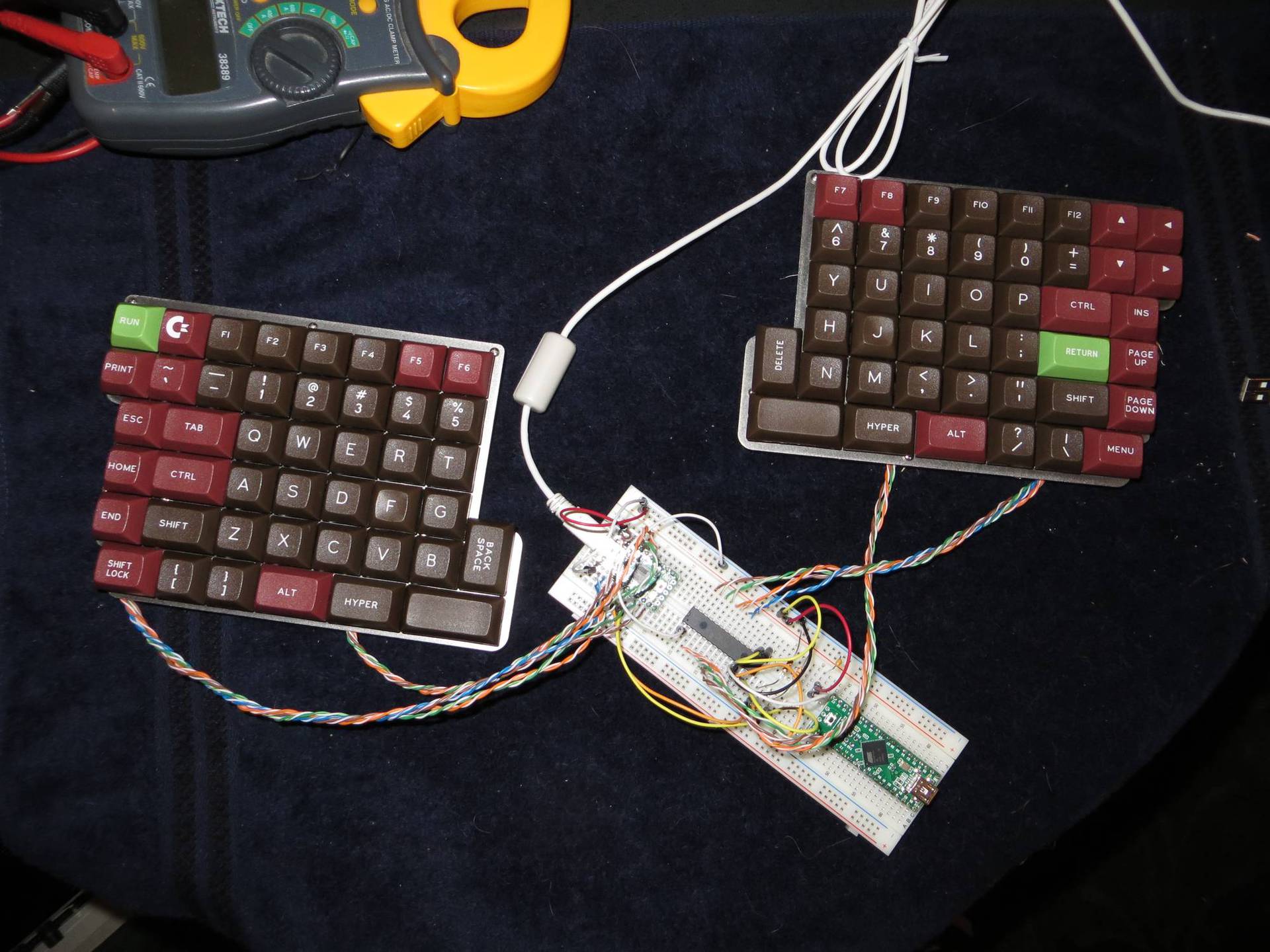
And such a miracle of technology, which is already difficult to call the keyboard:

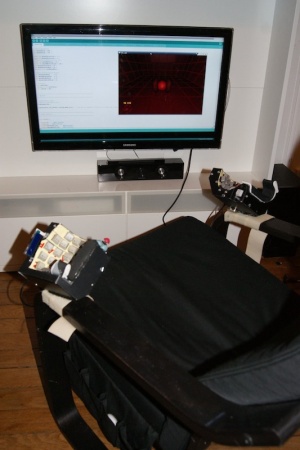
This keyboard seems to be very convenient for me, if I pick up wrist support:

Very nice keyboard:
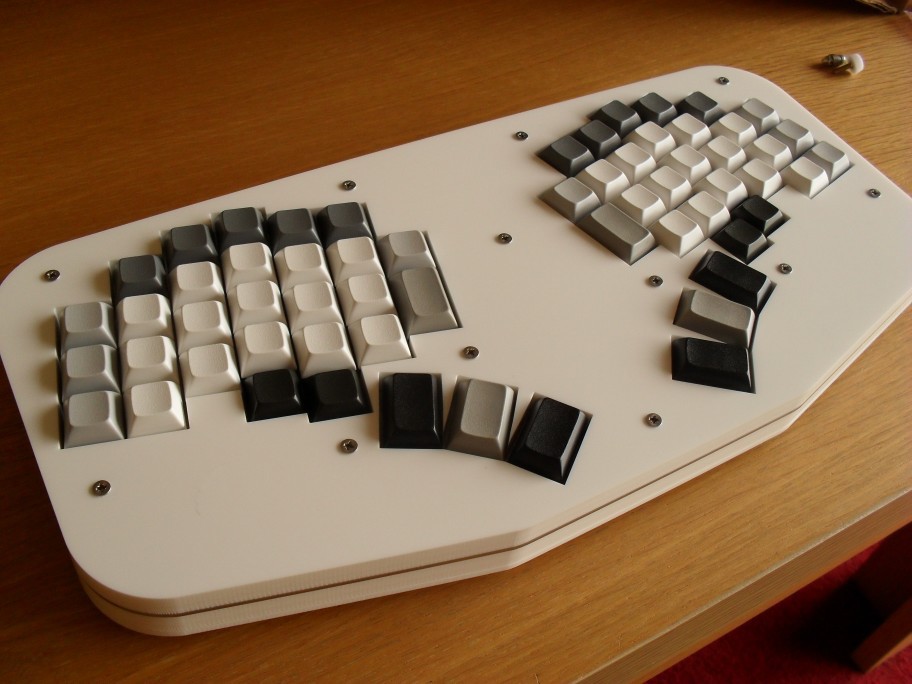
And even managed to find something on the Korean forum homemade:

This is not all, there are still a number of keyboards under development, they did not add to the review.
Indefatigable ibnteo and closest associates ( suenot ) with their CatBoard, CatBoard] [ and Ladoshki 44, which I managed to hold in my hands on a happy occasion:


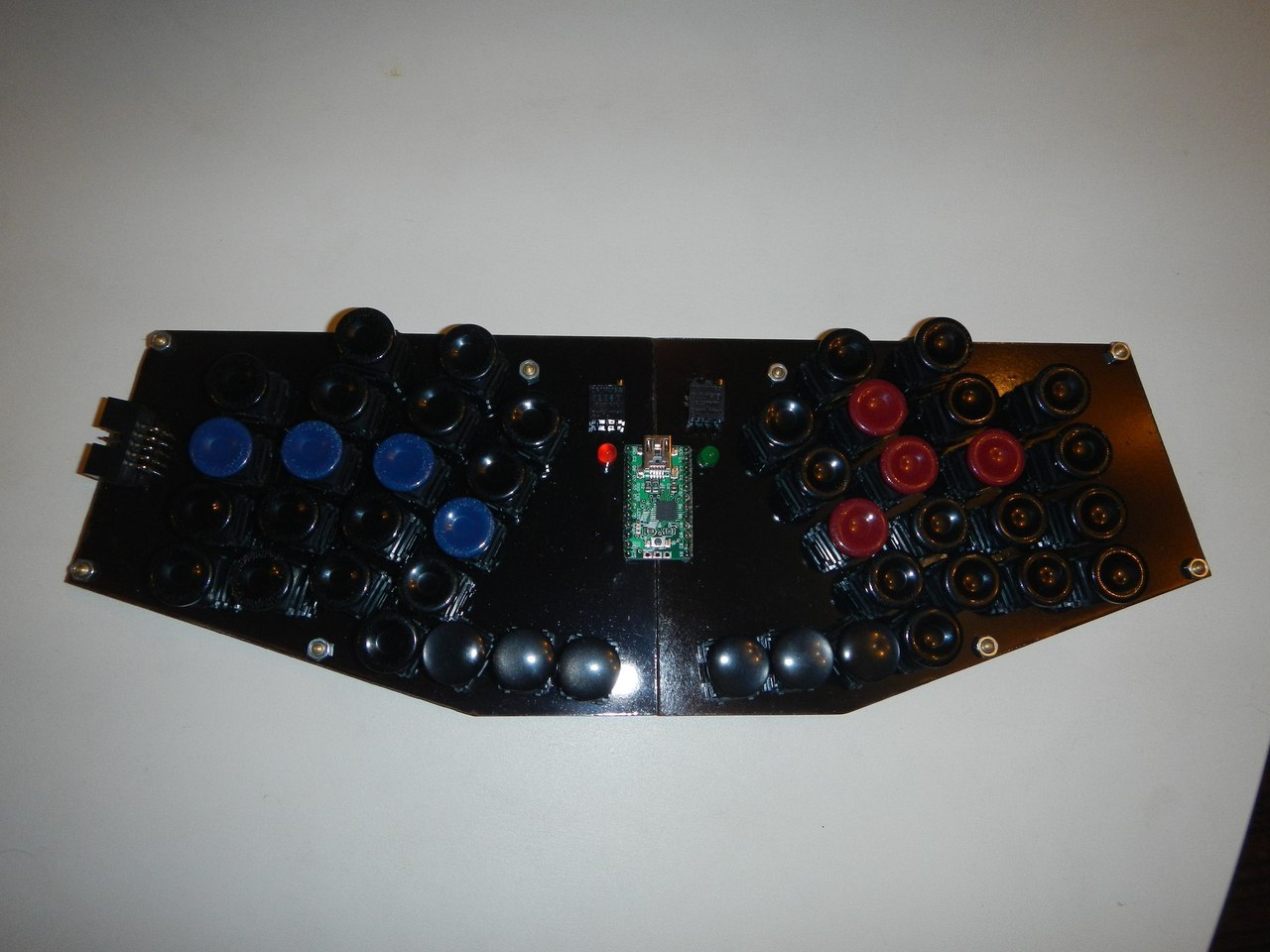
Like-minded person from Ukraine, nepotrib:

Steve_Key with its prototype:
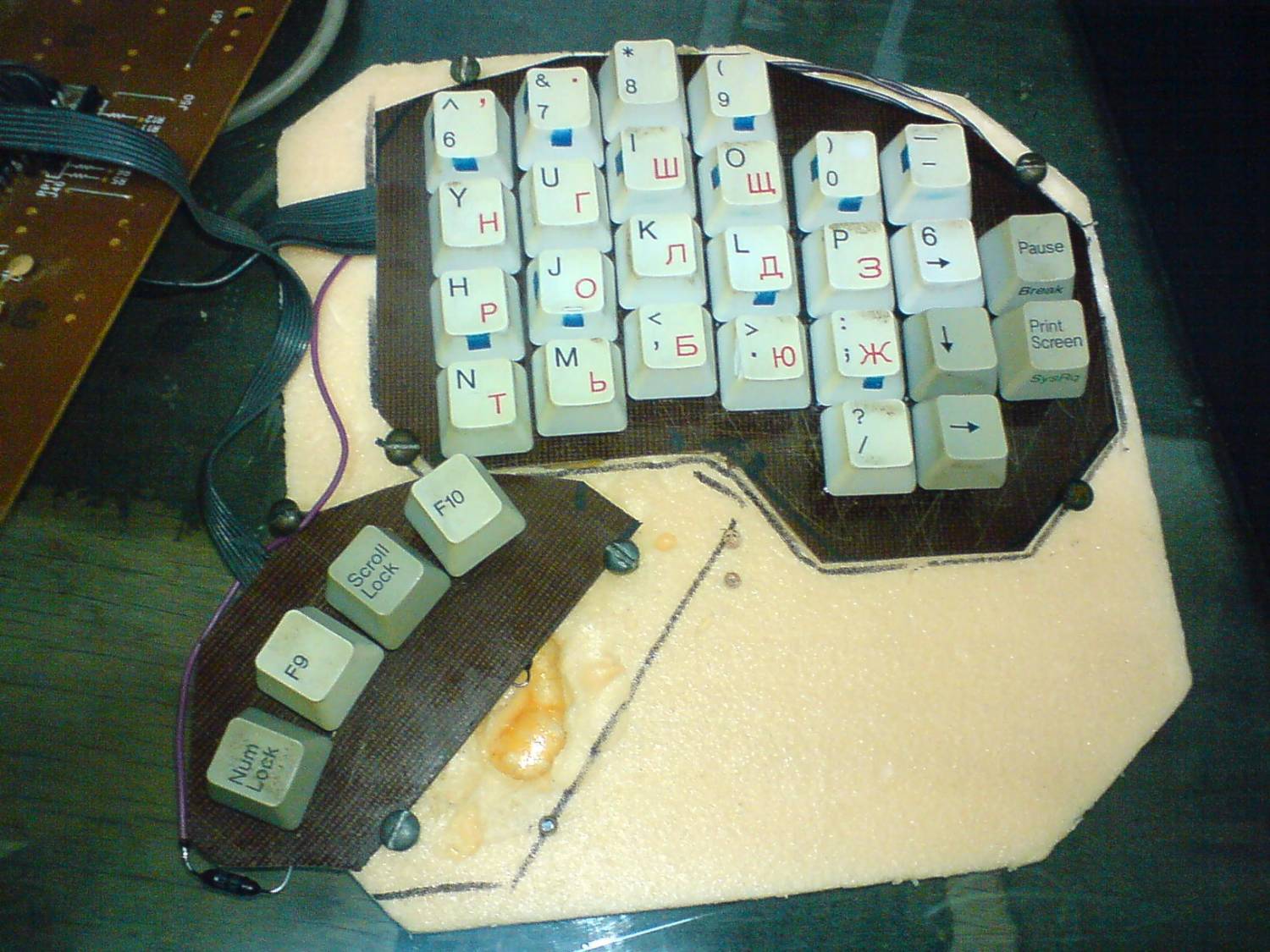

Nylithius with Ant-keyboard concept :
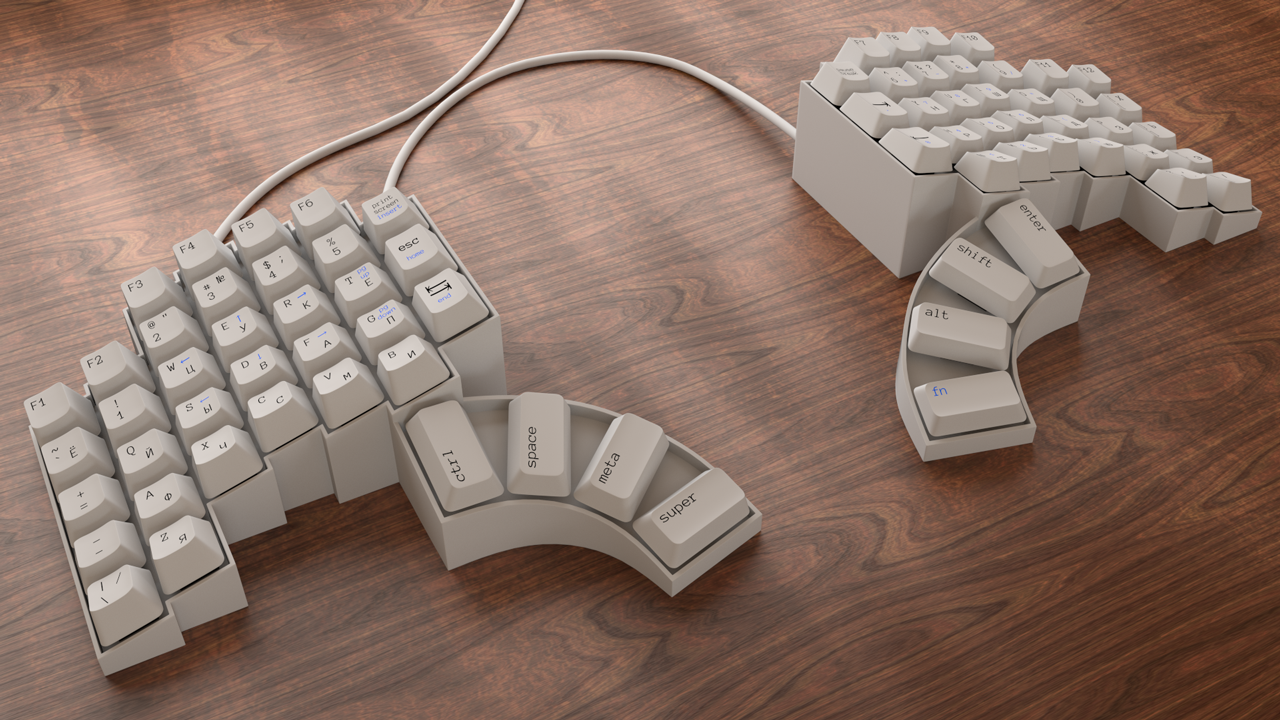
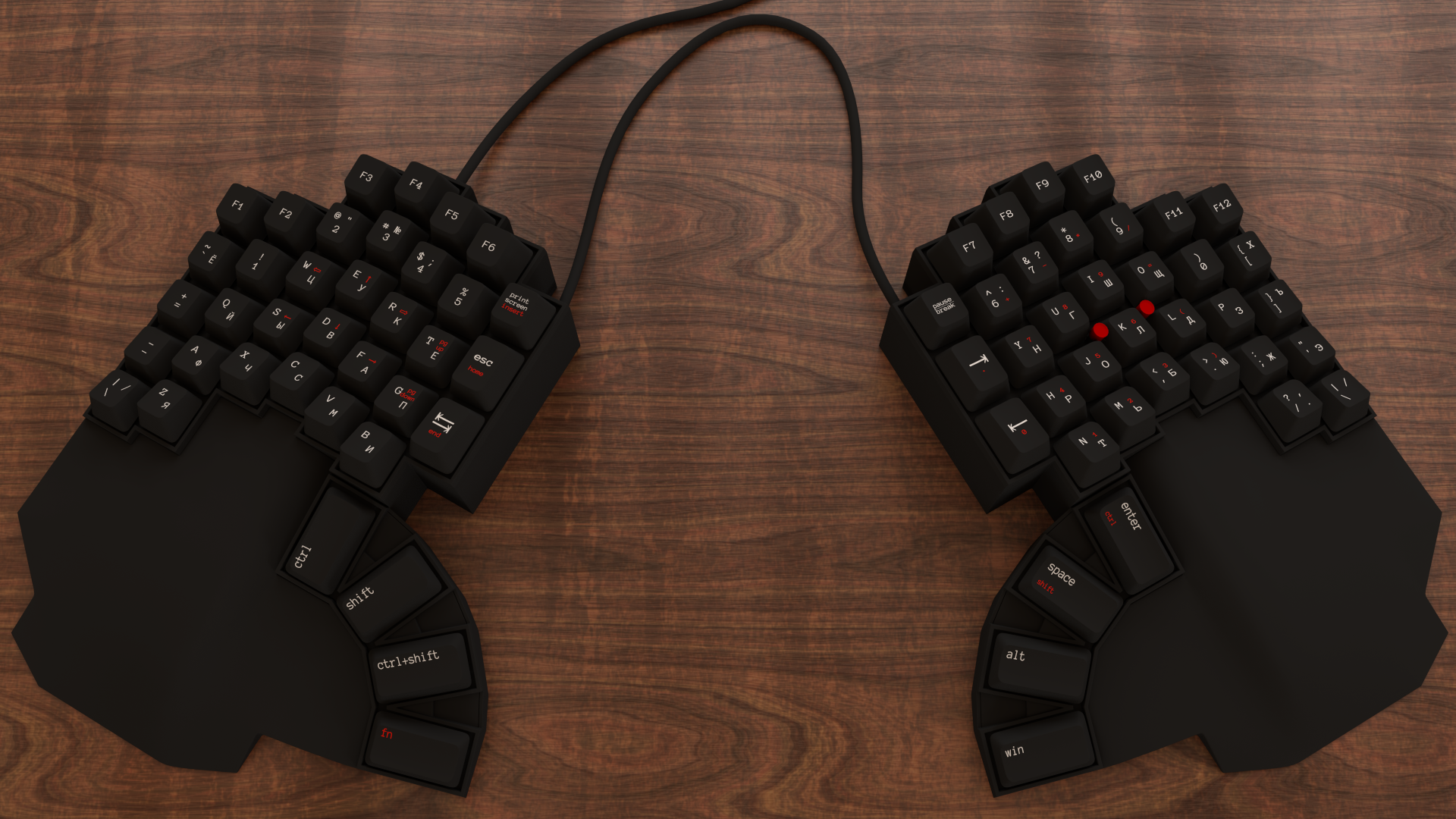
Zuncl with its own keyboard :
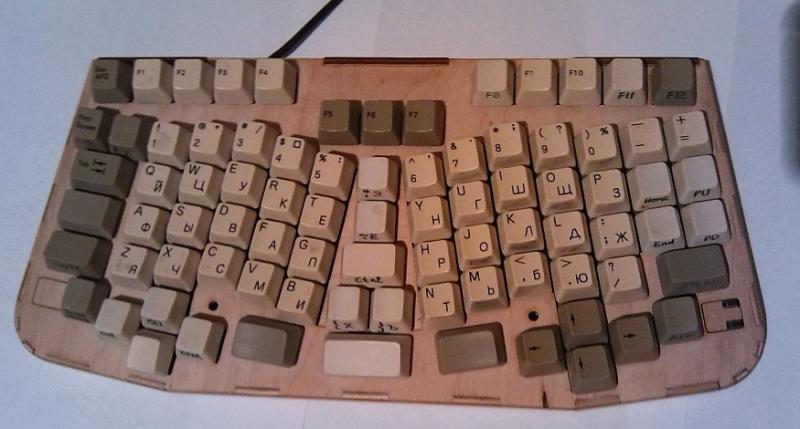
Jedi_PHP with this development:
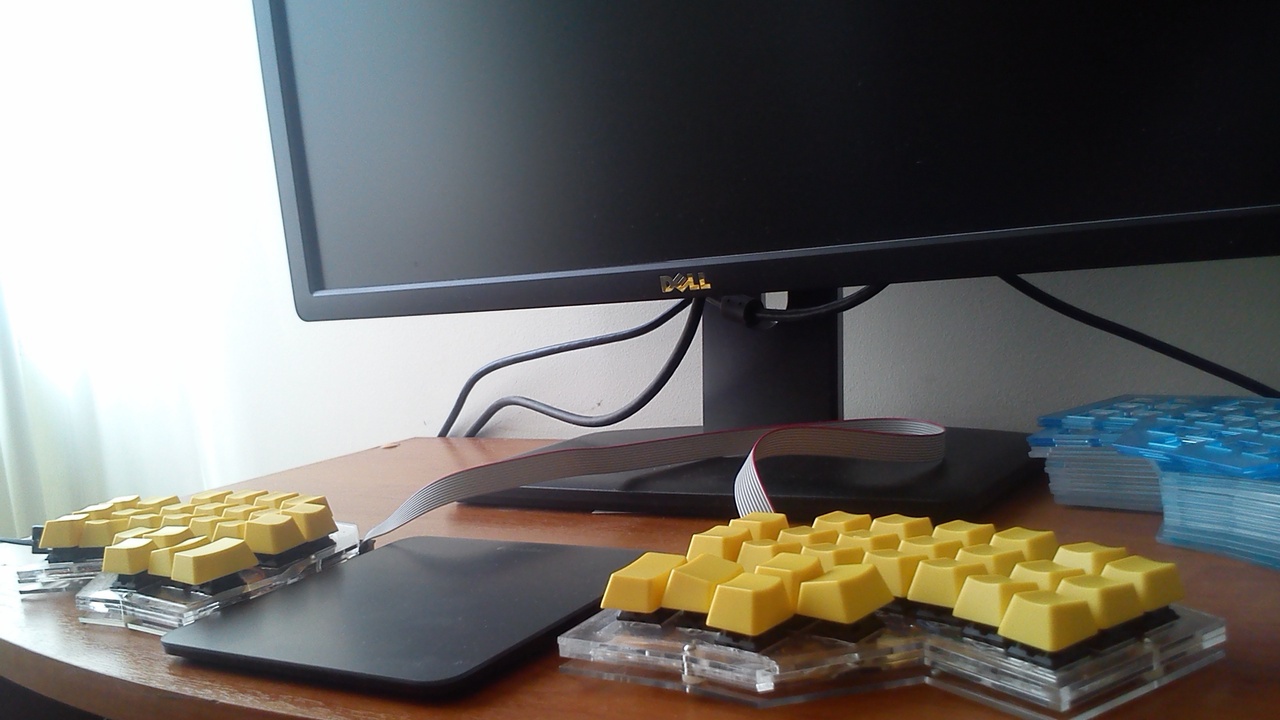
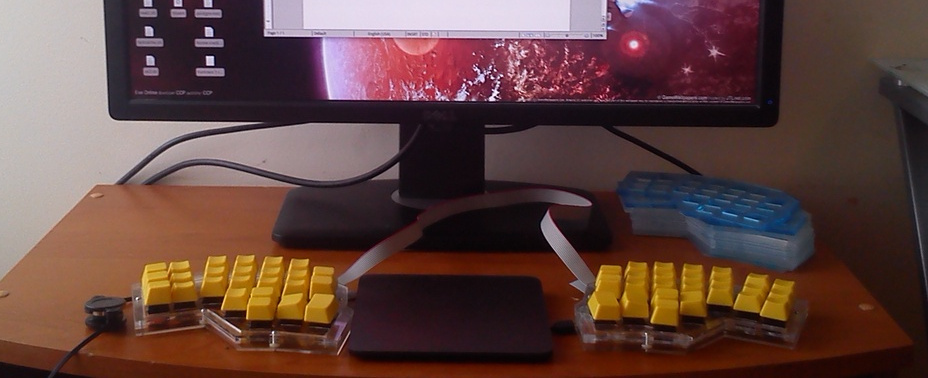
Marcel Abdrakhmanov with his concept :
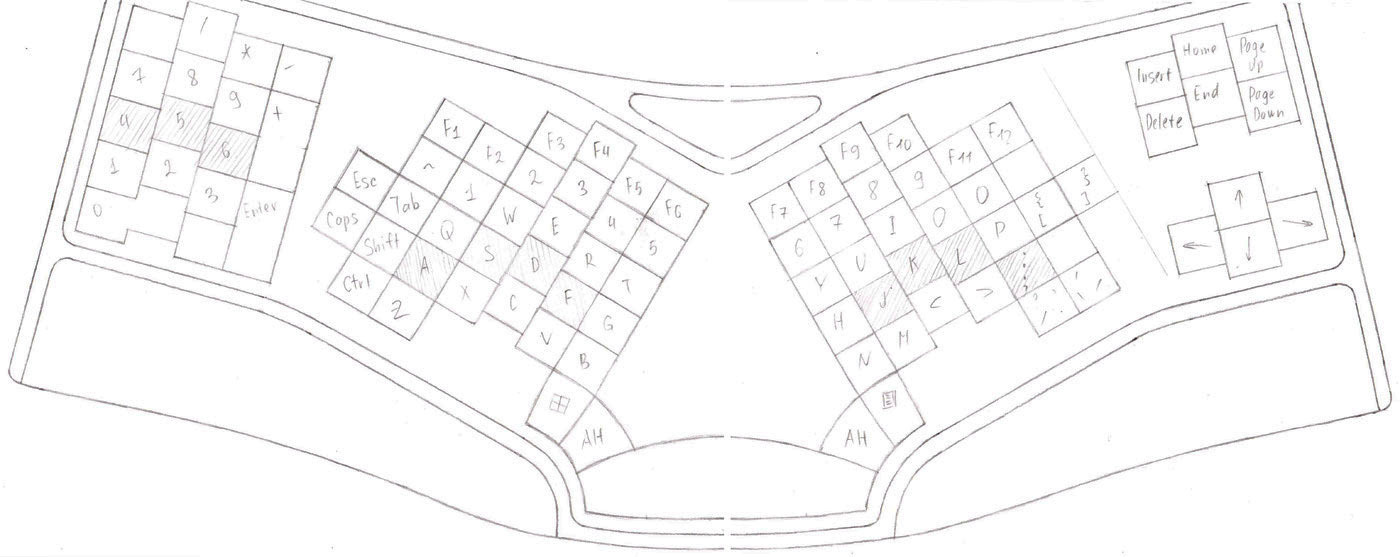
Vladimir with his My Keyboard . There is an option under the left hand.
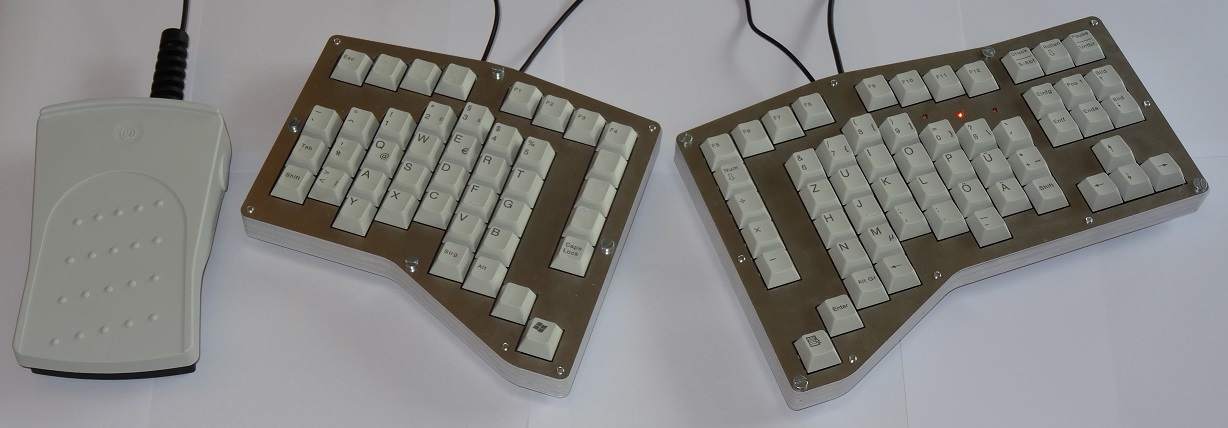
And modestly your humble servant:
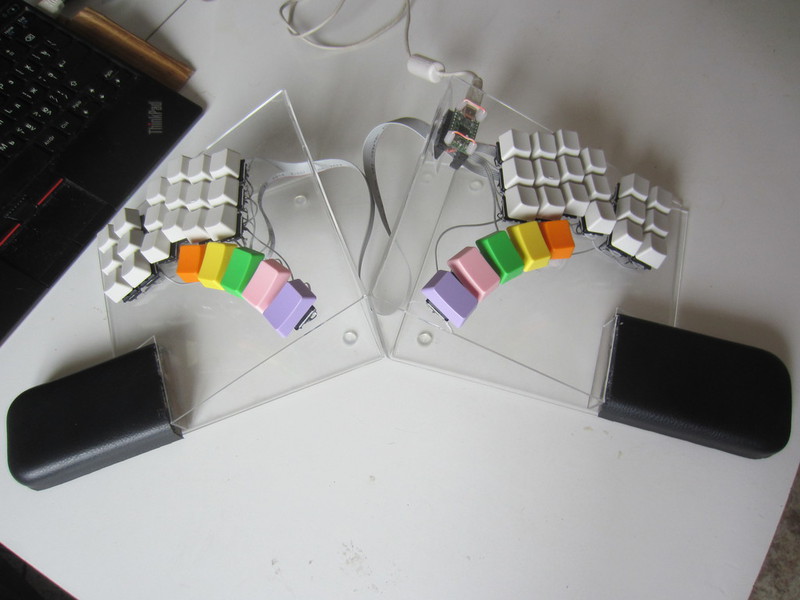
The dream of many people who spend a fair amount of their free time and money on developing ergonomic keyboards is to type everything on a comfortable, lightweight, compact keyboard.
Would you like one of the keyboards from this review? Or at least try?
If you are interested in keyboards, and do not miss articles about them here, then you already know how straight vertical columns are better shifted, and how half-split the keyboard is better than combined ones. If not - at the end of the article I will provide links.
No, there will not be anything about extravagant chord keyboards, or built for printing by shorthand.
Only that which suits the Kajom of us, those who print a lot, whether he is a programmer or just loves chatik and forums.
Anyway, any of us learns the method of blind ten-finger printing, and the sooner this happens, the better.
For priming KDPV.
')

First, I will talk about old keyboards of this type, including Apple, IBM and NEC, which did not live up to our time, then more or less modern ones, and then about a new wave, including the domestic movement.
There are so many keyboards that it’s pretty hard to classify them. Let's leave this work to professional taxonomists.
Story
Tron
It is hard to say who was a pioneer in this area, but I have a vague suspicion that the Japanese in the framework of the Tron project, which was to become a personal computer platform in the mid-80s, but there is an opinion that it did not because of the pressure of the US government on Japan, Microsoft lobbied. A multi-page report on a study conducted on a random sample of several hundred Japanese people was left to us from the project in order to make the keyboard ideally suited to most users. And well, they turned out quite interesting:

You can see a lot of interesting things right away:
- The columns are straight and go like a fan. Relax your fingers, punch and squeeze your palm and realize that it is very natural, when the fingertips are closer to the hand, they are closer to each other;
- a few buttons under the thumbs. On conventional keyboards, even the space is a bit tall so that the thumbs on it lie in a relaxed position, what can we say about the modifiers, to which the thumbs come to bend in an unnatural way;
- Spacebar, Shift, Backspace keys on the thumbs;
- keys O and X (presumably - Enter and Escape) under the index, and not under the weak little fingers;
- The block under the little fingers is shifted below. No wonder, because the little finger is shorter than the rest of the fingers in most people.
Nec
In the footsteps of Tron, NEC went with its PC-880I-KI, released in the 83rd year:

There were modifications, shortened the keys from the middle block:

And then completely removed, at the same time adding another button under the thumb:

And then they almost completely removed the second column under the little fingers, and half spread them apart.

Apple
Alas, Apple either did not fully understand the idea of the Japanese, or were afraid to do something revolutionary (and these were just the years of the company's stagnation), or tried to make the product cheaper. It is possible that American law regulated the keyboard, and it was impossible to do something more or less deviating from the standard.
It turned out this, called Apple Adjustable Keyboard:

All the wonderful ideas from Tron were thrown out, only a half reversal remained, but it was regulated.
It is interesting to note that the keyboard was released to protect the company from lawsuits that were popular at the time against people who received RSI when typing on regular keyboards.
Keys - low profile.
Ibm
IBM in the same 93m year released a keyboard with the same name as the Apple Adjustable Keyboard, but more flexibly adjustable:


In addition, it differed traditional for IBM those times mechanical switches with a snapping spring.
It sold a little more than 1000 pieces of such keyboards.
Cherry
A year later, Cherry released the G80-5000 (before this was the prototype of the V80-5000, but the year of its release is unknown):

The same sandals, and even with shoals - Enter Backspace further than usual.
Siliconon graphics
These people are known for thinking about their users more than other manufacturers.
In the 96th year, whether an employee of the company as part of the prototype, or a hobbyist, assembled a laptop from SGI O2 parts.


I contacted the author, he still ardently refers to keyboards, but now I’m very busy.
NEC again
At the very end of the section, because released a decade later.
The models are nonetheless interesting. The first, Effortlessly keyboard, with symmetric shift of rows. 95th year:

The second, Ergo Fit keyboard, with straight columns and half reversal. 98th year:

Daewoo
Unknown year prefix KOBO:

What is on the market?
Currently selling quite a lot. There are Kinesis, Maltron, and many others, about which I made a great overview topic .
Since then, the new Matias Ergo Pro has just appeared:

Yes, the mysterious Esrille NISSE, which seems to be possible to buy, but the price bites very strongly, and whether delivery exists outside of Japan is unknown:

UPD:
Veyboard Velotype was also found, but it seems to be a chord one:

All of these keyboards are good, but bad.
No wonder so many enthusiasts continue to invent new and new keyboards.
So, about enthusiasts.
Ergodox family
Immediately shocking photos. All keyboards are assembled at home by self-made craftsmen. For collective or individual projects.
The kit periodically can be bought on the Internet when a critical mass of people willing to purchase accumulates.
The original Ergodox (kit for self-assembly) in different variations:








From the latter, the project was born Axios, as Ergodox with open source. Buy it is impossible. One of the prototypes was KPDV for this post:






Inspirer of the project Ergodox, Key64:

Non-ergodox
A series of keyboards from Jesse Vincent, which organized the company and now continues to search for the perfect keyboard that will stir up the public:





Atreus:

Two-handed OneHand:

Here is such an interesting concept, which recently raised a lot of money on kickstarter:

Serial keypad wizard with a capacious nickname suka managed to insert trackpoint from old laptops into their keyboards:


Here is such a nondescript option:

Here is such a noodle:

And such a miracle of technology, which is already difficult to call the keyboard:


This keyboard seems to be very convenient for me, if I pick up wrist support:

Very nice keyboard:

And even managed to find something on the Korean forum homemade:

This is not all, there are still a number of keyboards under development, they did not add to the review.
Domestic
Indefatigable ibnteo and closest associates ( suenot ) with their CatBoard, CatBoard] [ and Ladoshki 44, which I managed to hold in my hands on a happy occasion:



Like-minded person from Ukraine, nepotrib:

Steve_Key with its prototype:


Nylithius with Ant-keyboard concept :


Zuncl with its own keyboard :

Jedi_PHP with this development:


Marcel Abdrakhmanov with his concept :

Vladimir with his My Keyboard . There is an option under the left hand.

And modestly your humble servant:

Conclusion
The dream of many people who spend a fair amount of their free time and money on developing ergonomic keyboards is to type everything on a comfortable, lightweight, compact keyboard.
Would you like one of the keyboards from this review? Or at least try?
Links for the curious
minimal split ergo, inspired by ergodox, suka & obra
Homemade split keyboard • deskthority
Simplified split keyboard • deskthority
AcidFire's custom keyboard aka the grand piano
Self-made ergonomic CatBoard keyboard] [Habrahabr
Give me feedback on my custom design
AcidFire's custom split keyboard - ErgoGP
Catboard
70% + ErgoDox = I may have gone mad
Hey Webwit! Also, Prototype vertical Cherry keyboard • deskthority
splits
1994 Options by IBM model M15 (ergonomic) 13H6689
Yogitype - Features
Thumb key cluster - Flat or angled?
[Photos] BAT keyboard (AT / ADB model) • deskthority
[WIP] 2nd split handed ergo keyboard • deskthority
[WIP] OneHand - 20% Keyboard • deskthority
Index of / input / utron
kurplop
10 章
www7.ocn.ne.jp/~hisao/image/8801KI.htm
Oobly builds an ergo board!
Ergo56 - crazy idea for a mini, foldable ergo keyboard
ErgoTravel (ErgoT) - The small luggable Ergonomic keyboard
Kinesis (keyboard) - Wikipedia, the free encyclopedia
Kinesis Advantage - Deskthority wiki
Maltron
Google traduction
An other DIY keyboard project • deskthority
My DIY keyboard collection (or how I became a KB-geek ...) • deskthority
Aleksander's projects • deskthority
Keyboard Ant-keyboard. Part 1 - general design and development / Habrahabr
Matias Ergo Pro Keyboard
Ergonomic Keyboard "Ladoshki 44" - Volka's Blog
UGeek Hardware Review: Darwin Keyboards SmartBoard
Comfort Ergonomic Computer Keyboard
File: TRON-keyboard-PMC-TK1-right.jpg - Wikimedia Commons
Super laptop
Photo: KBDMania - Trinity
Zemmix KOBO, until now unknown | MSX Resource Center (Page 1/4)
11089 (3264 × 1836)
11072 (768 × 333)
Cherry V80-5000 - Deskthority wiki
DSC_0137_vert.jpg (1440 × 2560)
Atreus, a column-staggered 40%
Bison keyboard build
YLW - 50-key split keyboard prototype • deskthority
kKeyb - Forum
Atreus, a column-staggered 40%
Keyboard Ant-keyboard. Part 2 - redesign and rethinking of concepts - Habrahabr
MY COMPUTER Weekly
[WIP] OneHand - 20% Keyboard • deskthority
The Ergo Keyboard from Nicolas Tavlas
The Esrille New Keyboard
in which keyboard science goes further - Technomancy
YLW - 50-key split keyboard prototype • deskthority
pfLMgfo.png (1860 × 772)
kKeyb
Ergonomic keyboard concept
jesse's blog
BOOMSTARTER
Hall effect keyswitches
Implementation of their projects in FabLab Polytech | FabLab Polytech | # 1 Fab Lab in Petersburg
Fab lab in Russian
DreymaR's Big Bag of Keyboard Tricks (Linux / XKB files included)! (Page 1) / User contributions / Colemak forum
Homemade split keyboard • deskthority
Simplified split keyboard • deskthority
AcidFire's custom keyboard aka the grand piano
Self-made ergonomic CatBoard keyboard] [Habrahabr
Give me feedback on my custom design
AcidFire's custom split keyboard - ErgoGP
Catboard
70% + ErgoDox = I may have gone mad
Hey Webwit! Also, Prototype vertical Cherry keyboard • deskthority
splits
1994 Options by IBM model M15 (ergonomic) 13H6689
Yogitype - Features
Thumb key cluster - Flat or angled?
[Photos] BAT keyboard (AT / ADB model) • deskthority
[WIP] 2nd split handed ergo keyboard • deskthority
[WIP] OneHand - 20% Keyboard • deskthority
Index of / input / utron
kurplop
10 章
www7.ocn.ne.jp/~hisao/image/8801KI.htm
Oobly builds an ergo board!
Ergo56 - crazy idea for a mini, foldable ergo keyboard
ErgoTravel (ErgoT) - The small luggable Ergonomic keyboard
Kinesis (keyboard) - Wikipedia, the free encyclopedia
Kinesis Advantage - Deskthority wiki
Maltron
Google traduction
An other DIY keyboard project • deskthority
My DIY keyboard collection (or how I became a KB-geek ...) • deskthority
Aleksander's projects • deskthority
Keyboard Ant-keyboard. Part 1 - general design and development / Habrahabr
Matias Ergo Pro Keyboard
Ergonomic Keyboard "Ladoshki 44" - Volka's Blog
UGeek Hardware Review: Darwin Keyboards SmartBoard
Comfort Ergonomic Computer Keyboard
File: TRON-keyboard-PMC-TK1-right.jpg - Wikimedia Commons
Super laptop
Photo: KBDMania - Trinity
Zemmix KOBO, until now unknown | MSX Resource Center (Page 1/4)
11089 (3264 × 1836)
11072 (768 × 333)
Cherry V80-5000 - Deskthority wiki
DSC_0137_vert.jpg (1440 × 2560)
Atreus, a column-staggered 40%
Bison keyboard build
YLW - 50-key split keyboard prototype • deskthority
kKeyb - Forum
Atreus, a column-staggered 40%
Keyboard Ant-keyboard. Part 2 - redesign and rethinking of concepts - Habrahabr
MY COMPUTER Weekly
[WIP] OneHand - 20% Keyboard • deskthority
The Ergo Keyboard from Nicolas Tavlas
The Esrille New Keyboard
in which keyboard science goes further - Technomancy
YLW - 50-key split keyboard prototype • deskthority
pfLMgfo.png (1860 × 772)
kKeyb
Ergonomic keyboard concept
jesse's blog
BOOMSTARTER
Hall effect keyswitches
Implementation of their projects in FabLab Polytech | FabLab Polytech | # 1 Fab Lab in Petersburg
Fab lab in Russian
DreymaR's Big Bag of Keyboard Tricks (Linux / XKB files included)! (Page 1) / User contributions / Colemak forum
Source: https://habr.com/ru/post/221209/
All Articles